[dropcap]I[/dropcap]n this week’s blog post we publish for the first time one our anonymous success stories. An anon-success story covers all the engineering details you need and respects the privacy of customers. You can read our previous introduction to our anonymous stories here. In this post we cover two successes from Japan in the use of AutoForm-Sigma. For the sake of practicality and ease of reading we’ll name each customer ‘Customer X.’
Case 1: Accurate Prediction of Splits in Production
‘Customer X’ is a dedicated part maker for Mazda and has used a stamping software for over ten years, coming from one of AutoForm’s main competitors. They used it to support process validation and production line problems. At every stage from die engineering to production, simulation engineers usually tune individual parameters to reconstruct the issue within simulation and then start to find out a suitable solution. One big issue was that they could not guarantee that the optimized parameter would avoid splits in the production line (see Fig. 1). This particular software that was being used incorporates Friction Coefficient changes and the Yoshida-Uemori Model (YU model) to predict split issues in production. But its predictions were not consistent. For one case the prediction was very accurate, but for other cases they were far from reality.

Fig. 1: Splitting in production line after sign-off try-out (590 MPa, 1.6 mm)
Fortunately ‘Company X’ had AutoForm users on hand, who came to us in order to question how AutoForm could support the parameter set-up for an accurate prediction. Until then, they had only used AutoForm for feasibility studies in the early stage. AutoForm Japan proposed the application of AutoForm-Sigma for production support, with its automatic set-up functionality. At the same time they introduced the importance of nominal set-up based on customer`s experience and priorities, then built a base model together with the customer.
Thus the first priority was to define a model based on a standard material model and forming process, instead of using overly complicated/detailed material and numerical parameters. The customer fully understood that a detailed parameter set-up would hinder the whole project.
Here the Japanese reps showed them a splits results for the production line support based on an AutoForm-Sigma Robustness analysis with a “green” nominal set-up.

Fig. 2: Single simulation (Left, no splits), Robustness simulation CpK(Right)
Another aspect introduced to them was the influence plot as shown below. This plot indicated the most influential parameter allowing them to take countermeasures based on facts. Finally, the customer found out that they had an issue with friction condition change, dependent upon where and how long they stored the oiled blank. Based on this case they embraced AutoForm’s solution for Process Robustness for production support and have realized its importance.

Fig. 3: Influence regarding splits
Case 2: An Accuracy Evaluation between Actual Panel and Simulation Results
‘Customer X’ is a major tool maker for part suppliers, providing to two major OEM’s in Japan. Their primary production is stamping tools for UHSS materials. They use both AutoForm and PAM –STAMP for sheet metal forming simulations.
To reduce the number of tryout loops, the user understood that it is important to reach a dimensionally accurate panel at the outset for the first tryout loop. Therefore verifications were carried out to improve simulation accuracy, particularly the matching rate with the actual panel.
The customer has been focusing on improving the consistency of the actual panel and the simulation of a center pillar (980 MPa, 1.4 mm) since this is their main product. They applied Tensile Test results as the material input, and furthermore tuned various numerical parameters.
Some models reconciled nicely, but unfortunately not all. Customer X then came to AutoForm to discuss how to approach such kind of cases. Through various communications with the user, AutoForm was able to confirm the consistency between the simulation settings and the trial conditions, and furthermore investigated instability factors.
The Japanese reps found out that the reaction force of 980 MPa material is too large for the capabilities of the Tryout Press, the cushion pressure and even the press force was insufficient to close the Ram to the BDC. From the user’s experience, a gap of 0.1 to 1.0 mm between the tools could be observed in certain areas due to insufficient press tonnage.
Based on this experience, they setup a Systematic Process Improvement analysis and defined a Gap of Die and Binder as Design Variables as shown here.

Fig. 4: Design Variable setting
Subsequently the evaluation for the influence on Springback was done. As can be seen in the Scatter plot below the reps found out that a small change in Gap resulted in a too many differences in the springback result. Accordingly, the springback at the front region is very sensitive to the Binder Gap, i.e. tool opening due to insufficient cushion pressure.
As a result, in order to get an accurate panel in the first tryout, ‘Customer X’ realized the importance of evaluating and improving the Stability of the Process rather than devoting time to tuning the parameters of the simulation.

Fig. 5: Regression curve between Springback and Binder Gap
By, Intaek Lee, Senior Application Engineer AutoForm, Brian Su, Senior Application Engineer AutoForm, Wataru Suzuki, Technical Manager AutoForm Japan.



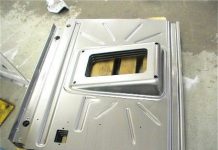

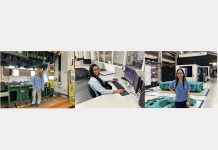
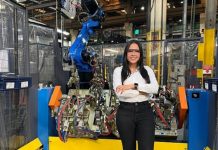
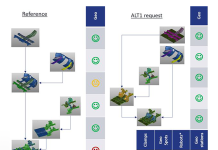
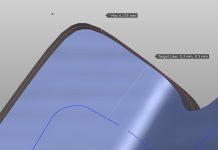





Thanks for sharing this post this is really very nice and amazing. Glad to have a visit here.